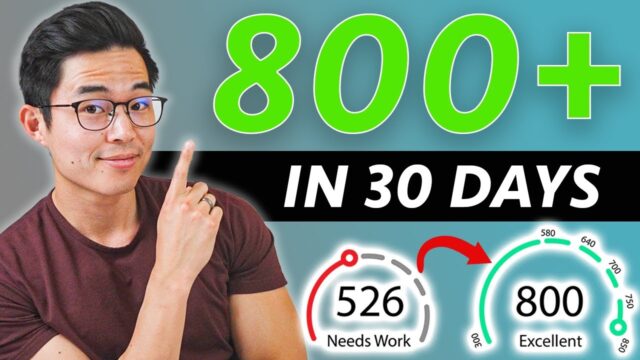Table of Contents
ToggleOne very big matter one should keep in mind is that an insurance policy goes beyond just being a legal obligation; rather, it is the concept of being well insured that manages and protects one’s assets from future losses. Many people, it seems, don’t comprehend how important it is to have the appropriate amount of insurance coverage, and in return, end up quite literally underinsured. One may say that underinsurance is a disease that a lot of people live with, which can totally render a person useless in case of an event when they need to place a claim, as an insurance payout would almost never be sufficient.
This paper will focus further on defining what we mean by the term ‘underinsurance’, who does it affect, why is it common in today’s users, and most importantly, strategies to counter underinsurance. The protection of your assets is a priority, and therefore it is essential to educate oneself about the potential risks that could arise in the future.
What is Underinsurance?
Underinsurance is, by definition, the state of having a lesser insurance policy than what would require covering one’s assets in full. In practical usages, this phrase means that one has bought insurance, however it is at most case only there in papers and no reasonable amount of speculation can rescue one’s financial investment in such a situation.
On part of the insured, insurances such as life, health, auto, business farm and home which can be put at risk due to risks of being underinsured. How much risk exposure an insured can face for being under assured depends on the nature of the situation but there is a general trend that it leads to out-of-pocket expenditure, financial stress, and lack of coverage.
Types of Underinsurance: Home Insurance: When the insured had their home only mortgaged to $250 000 owing to the reasonable estimate at the time of the mortgage, yet a reasonable estimate shows the house could be sold for $400 000, then the insured is under insured by $150,000. This implies if the house was burnt to the ground due to a catastrophic event and would like to build another house, then the insured would be needed to find the money cover the difference.
Auto Insurance: Let’s say you have a car insurance policy that pays very little in regard to third party liability, then at one point you get into an accident that is very serious, then the car insurance policy might not be able to cover the putting right the damages to the other driver’s car or the driver’s medical expenses. Any remaining expense would be picked by the insured.
Health Insurance: Let’s say that a certain portion of your medical expenditures is out of pocket whereby your health insurance plan does not cover certain treatments, medications, or procedures, or the effective deductible is high and beyond your affordability level; in such a scenario you will be charged for a big percentage of your medical expenses.
Causes of Underinsurance
Underinsurance is a common problem faced by many owing to various reasons. Some of the most common causes include:
Non-Correspondence of Asset Valuation: To put it simply, if you do not phrase reasonably the property or health or business that you intend to get insured for, you may end up being under-insured. For instance, if you make renovations to your house and forget to change its value on the insurance policy then you will be under-insured.
Life Adjustments: People undergo a variety of life changes, like getting a spouse, a new child, or a new car, which in their busy lifestyles may forget to alter their insurance policies. If you don’t change your policies in accordance with your life adjustments, then that creates scope for under-insurance.
The Need for Cutting Costs: Another common problem is that people want to lower their expenditure and buy the cheapest insurance plan they can find. This mainly arises from the temptation of lower premiums; however, it also means that whenever appropriate, the maximum possible protection should not be expected.
Ignorance of Policy Language: Policies and underwriting standards are procedures. Because almost everyone has an insurance policy, people are accustomed to its terms, which can create misunderstandings, such as what is really insurable, and shifts the perception on how much insurance one truly has.
Alterations in Market Conditions: Owners of homes and properties can experience rising costs of rebuilding because of several market conditions, inflation as well as changed construction costs for example. Should there be no adjustments in regard to those market conditions, in that case there will be an underinsurance risk.
Risks and Consequences of Being Underinsured
Underinsurance is definitely an area of risk which poses the threat to one’s financial status. Some such risks include:
Out-of-Pocket Expenses: Where a person is underinsured, there is a need to pay for the costs that exceed the extent of the insurance settlement, and the amount claimed on the basis of the insurance policy. This will put someone in a very stressful situation because the costs could be enormous.
Inability to Recover Fully: Suffice it to say, being underinsured means that an individual cannot have the level of insurance necessary for asset restoration or other expenses associated with a certain event. For instance, if there was a fire that destroyed a house and the rebuilding cost is $200,000, but only $100,000 worth of insurance covers it, the owner will have to pay the remaining amount.
Individual’s Liability and Business Liability Insurance: In the scenario of liability insurance coverage, you could find yourself personally exposed to payment risks in the event that a lawsuit is filed against you in case of coverage deficit. Similarly, for businesses, it may put the company at risk of future insolvency owing to lack of adequate coverage of critical employees or assets – essential for the company’s growth.
Insurance Policy Provision and their Uses: Some forms of underinsurance may cause the insurance company to deny your payment request in case they need to make a claim. Generally, a claim could be denied even if you have coverage but not enough as to warrant settlement of the whole claim amount by the insurer.

How to Address Underinsurance
To avoid the repercussions of being under insured, it is essential that you are adequately covered with sufficient policies. Here are some measures you should implement in order to avoid being underinsured.
Attend Periodic Insurance Review: Insurance needs and relevant circumstances can be said to be dynamic meaning that it is important to archive the insurance in the insurance policy in addressing the present future coverage needs. For this reason, homeowners’ insurance, auto, life coverage, health risks and businesses insurance policies should be checked after every one year’s endorsement at a minimum.
| Insurance Type | Review Frequency | What to Check |
|---|---|---|
| Home Insurance | Annually | Reevaluate the value of your home, personal belongings, and any renovations or improvements. |
| Auto Insurance | Every 6-12 months | Check for changes in vehicle value, driving habits, and coverage limits. |
| Health Insurance | Annually | Ensure coverage includes necessary treatments and that premiums remain affordable. |
| Life Insurance | Every 2-3 years | Assess whether your policy reflects changes in your family situation or financial obligations. |
Proper Assessment of Assets: Make sure you determine the value of your home, vehicle, business, or any other assets of significant value. That will allow you to ensure that your insurance protection is sufficient where a claim happens. If you have a good roof over your head, do not forget to estimate the rebuilding amount based on current market prices.
Do Not Pick the Cheapest Available Option: It may not be a big surprise that some people do not be tempted to pick the cheapest insurance cover, but those who do, end up underinsured. Pick a policy which may be a little more expensive to obtain but would have sure coverage of risks that you are likely to face.
Ask For the Help of an Insurance Agent: It goes without saying that an insurance agent or broker can be of great assistance to you in determining why you need specific coverage types. They can take you through the horde of complicated insurance policies and make you appreciate the specific coverage that you really require.
Account For Inflation and Increase in Expenses: Inflation and construction or even medical cost increases have the power to affect the value of your property and the services. Make sure that your policy has provisions for inflation adjustment, or you can simply increase the coverage limits at intervals.
| Scenario | Recommended Insurance Adjustment | Insurance Type |
|---|---|---|
| Home Renovation | Increase home insurance coverage to reflect added value and construction costs. | Homeowners Insurance |
| New Vehicle Purchase | Update auto insurance to reflect the new vehicle’s value and insurance requirements. | Auto Insurance |
| Health Diagnosis or Medical Needs | Update health insurance to ensure it covers additional treatments or medications. | Health Insurance |
| Business Expansion | Adjust business insurance to cover new assets, employees, and liabilities. | Business Insurance |
Common Scenarios for which Insurance Changes are made: Having insufficient insurance cover can leave one vulnerable to potential financial losses and suffering due to unforeseen circumstances involving an accident, a loss, or any catastrophe. How to prevent underinsurance is simple: stay proactive – review your policies frequently, find the right balance of needs assessment, and talk to specialists so you spend neither too little nor too much on coverage.
Once you know what underinsurance is and how and why it occurs and how to stop it, self-defense against financial constraints, for you, your family, and your business, will always be possible, making sure that you are protected at all times against the instabilities of life.
FAQs
What is the difference between underinsurance and no insurance?
Underinsurance refers to having some insurance coverage, but not enough to cover all potential expenses in the event of a claim. No insurance means you have no coverage at all, which can be a more severe risk.
Can underinsurance impact my life insurance policy?
Yes, if you don’t have enough life insurance coverage, your beneficiaries may not receive enough money to cover final expenses, debts, or living costs after you pass away.
How do I know if I’m underinsured?
If you experience a loss and your insurance doesn’t cover the full extent of the damage or loss, you are likely underinsured. To avoid this, review your policies regularly and adjust your coverage limits as needed.
Does underinsurance affect my ability to file a claim?
Underinsurance itself doesn’t prevent you from filing a claim, but it can significantly reduce the amount you receive. If your claim exceeds your coverage, you will have to pay the difference out of pocket.
How can I avoid being underinsured without increasing premiums too much?
Shop for policies that offer the right balance of coverage and cost. Review your policies regularly, and work with an insurance advisor to optimize your coverage without significantly raising premiums.







